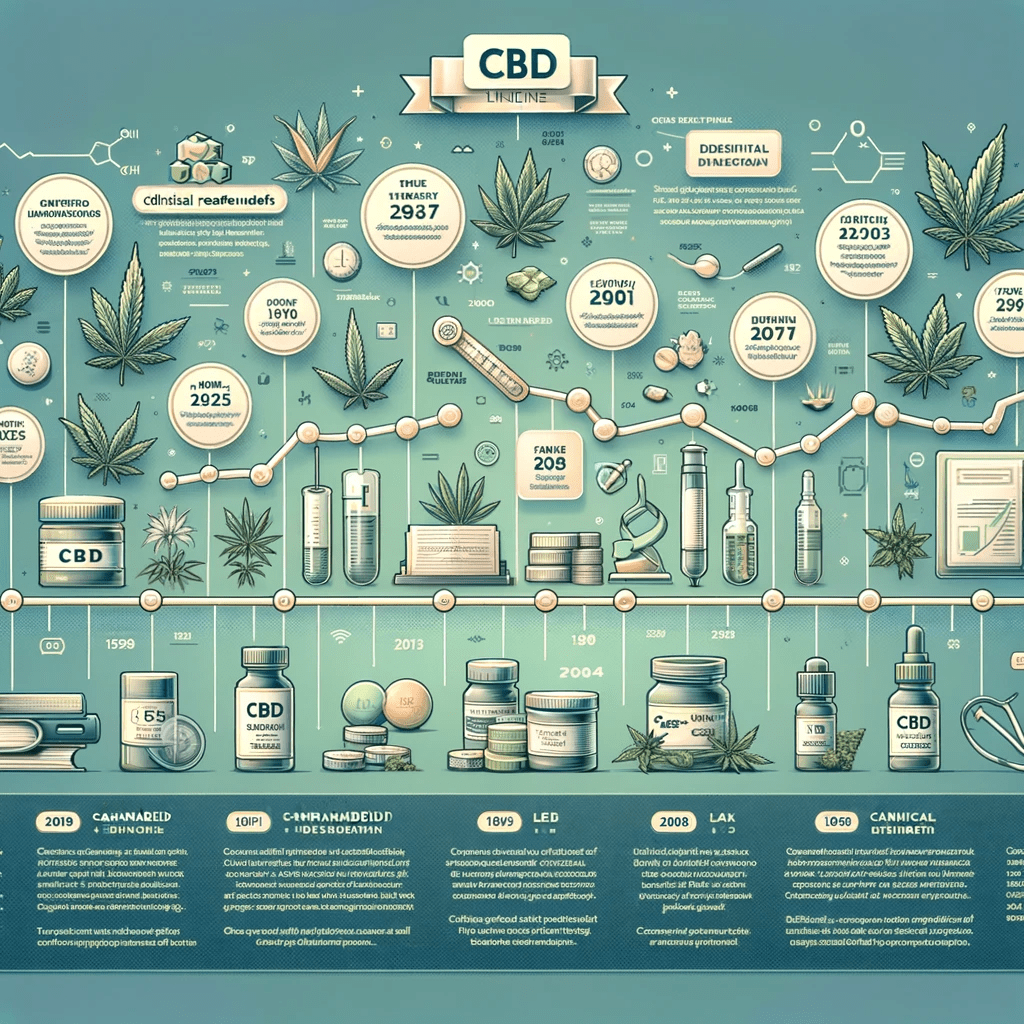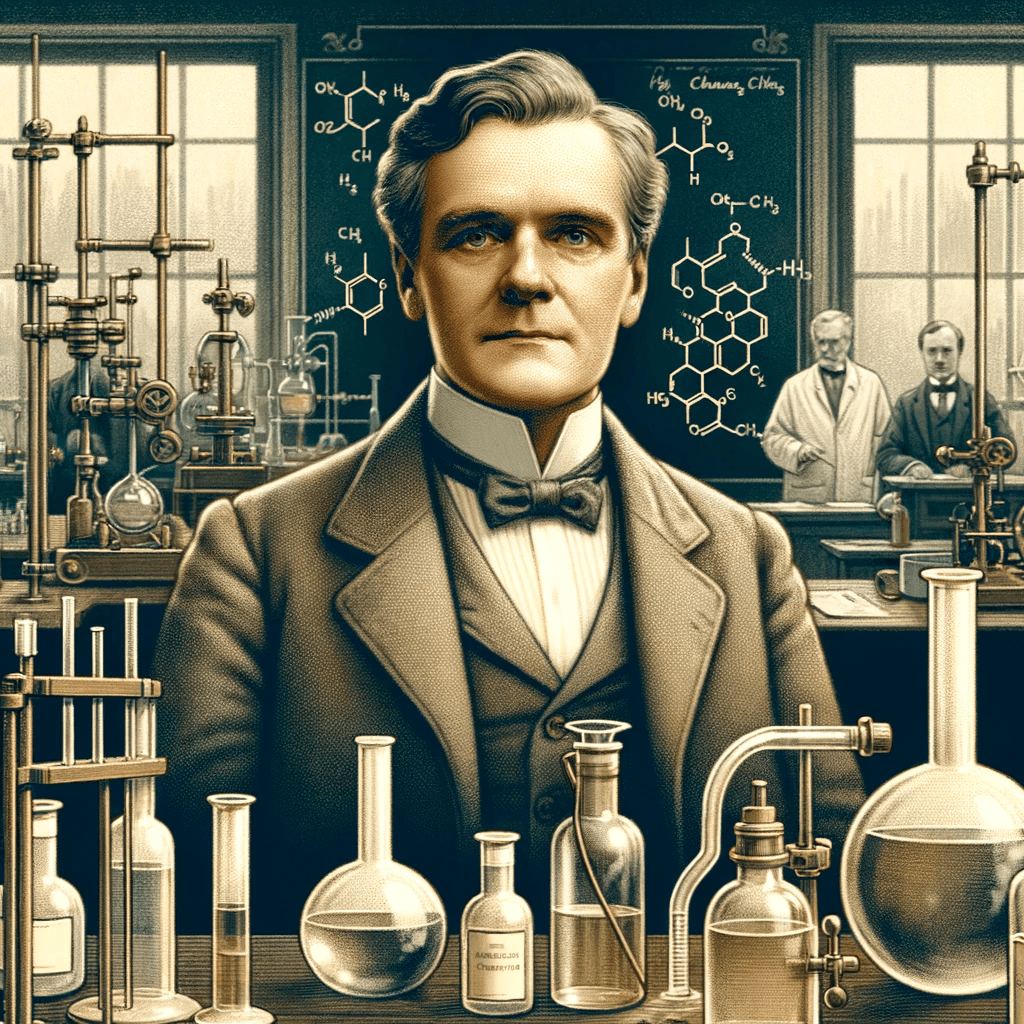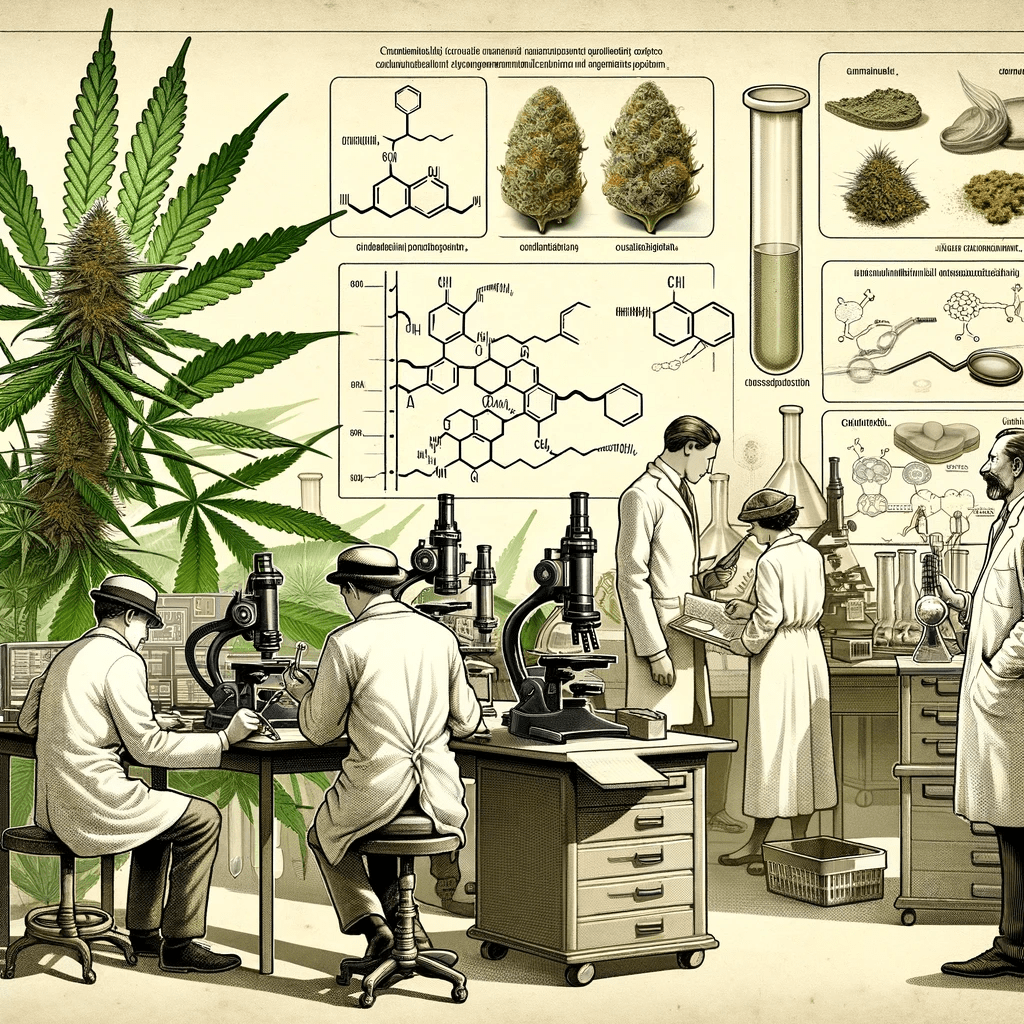
Did you know that CBD, one of the most talked-about natural remedies in recent years, has a long and fascinating history? From ancient civilizations to modern scientific studies, its discovery and research have spanned centuries. As you continue to learn more about CBD, you may be curious about its origins and how it has evolved over time. So, let us take a journey through the timeline of CBD and discover its rich history together.
Key Takeaways:
- CBD has a long history, with evidence of its use dating back to ancient times and continued exploration by cultures around the world.
- The discovery of CBD’s potential medical benefits and the identification of the endocannabinoid system have led to increased research and interest in its use for various health conditions.
- CBD’s potential for treating epilepsy and the FDA’s recent approval of a CBD-based medication are just a few examples of its growing recognition and potential for future research and use.
What is CBD?
Cannabidiol (CBD) is a compound from the cannabis plant that has been used since ancient times for various purposes such as making hemp cloth and rope. Its history involves European explorers, George Washington, and Thomas Jefferson. In the modern era, its medicinal properties were studied by Roger Adams. CBD’s legality was impacted by the marihuana tax act and World War II. Interestingly, CBD was recommended by an Irish doctor, William Brooke O’Shaughnessy, and was even used by American pharmacies and Queen Victoria, as highlighted by India’s Hemp Commission.
Who Discovered CBD?

In 1940, CBD was first discovered by Roger Adams, an American chemist, in a pharmaceutical lab while researching medicinal compounds. However, it wasn’t until 1963 that the stereochemistry of CBD was elucidated by Mechoulam and Shvo. CBD’s potential in female reproductive health issues, surgical anesthesia, and as a component of medicine kits has since been a subject of extensive research.
Timeline of CBD Discovery and Research
The discovery and research of CBD, or cannabidiol, has a long and fascinating timeline. From its initial discovery in the 1940s to its current status as a popular natural remedy, CBD has undergone a significant evolution. In this section, we will trace the timeline of CBD’s discovery and research, highlighting key milestones and developments along the way. From its classification as a controlled substance in the 1970s to its recent approval by the FDA, we will explore the important moments that have shaped our understanding of CBD and its potential medical benefits.
1. 1940s – First Discovery of CBD
- 1940: The First Discovery of CBD was made by Roger Adams and his team at the University of Illinois.
When delving into the origins of the First Discovery of CBD, it’s fascinating to acknowledge the pioneering work of Roger Adams and his team at the University of Illinois. Their groundbreaking research paved the way for further exploration into the potential benefits of CBD.
2. 1963 – Structure of CBD is Identified

In 1963, the identification of the structure of CBD marked a significant milestone in cannabinoid research. This discovery laid the groundwork for understanding the potential therapeutic benefits of CBD and opened the door for further scientific exploration into its pharmacological properties and medical applications.
Pro-tip: Having an understanding of the structural composition of CBD is essential in comprehending its interactions within the body and its potential effects on overall health and wellness.
3. 1970s – CBD is Classified as a Controlled Substance
During the 1970s, CBD was classified as a controlled substance due to its association with cannabis. This label imposed legal restrictions, hindering research on its potential benefits. Despite this obstacle, ongoing scientific exploration and evolving legislation have led to a better understanding of CBD’s properties and its potential use in various health conditions.
4. 1980s – Research on CBD’s Potential Medical Benefits Begins
In the 1980s, researchers began to delve into the potential medical benefits of CBD, leading to the discovery of its anti-inflammatory, anti-anxiety, and neuroprotective properties. This marked a significant turning point in understanding the therapeutic value of CBD, paving the way for future medical applications and propelling it into the spotlight for its promising contributions to health.
5. 1990s – Discovery of the Endocannabinoid System and Role of CBD

- 1990s: Researchers discover the endocannabinoid system, which plays a crucial role in regulating various physiological and cognitive processes. CBD is found to interact with this system, influencing functions like pain sensation, mood, memory, and appetite, highlighting the important role of CBD.
Pro-tip: When exploring CBD products, seek those that are lab-tested to ensure purity and potency, considering the vital role of CBD in interacting with the endocannabinoid system for maximum effectiveness.
6. 2000s – CBD’s Potential for Treating Epilepsy is Studied
- Recognition of the potential for CBD to treat epilepsy has sparked increased scientific interest.
- Researchers are delving into the impact of CBD on epilepsy, exploring dosage, administration, and efficacy.
- Clinical trials are being conducted to assess the effectiveness of CBD in reducing seizure frequency and severity.
- The findings indicate promising results, leading to expanded research on CBD-based treatments for epilepsy.
Suggestions: It is important to consult with medical professionals for personalized guidance on incorporating CBD into treatment plans for epilepsy.
7. 2010s – Growing Interest and Research in CBD for Various Health Conditions
- Explore the increasing interest in CBD research for a variety of health conditions, including anxiety, chronic pain, epilepsy, and sleep disorders.
- Examine the effects of CBD on conditions such as multiple sclerosis, Parkinson’s disease, and Alzheimer’s, which are driving ongoing investigations.
- Understand the potential of CBD in managing mental health issues like depression and PTSD, leading to further clinical trials.
8. 2018 – FDA Approves First CBD-based Medication
In 2018, the FDA approved the first medication, Epidiolex, which is based on CBD, for the treatment of two rare and severe forms of epilepsy: Lennox-Gastaut syndrome and Dravet syndrome. This was a major step in acknowledging the therapeutic benefits of CBD and opened up opportunities for more research and advancement in developing cannabinoid-based medications for various health conditions.
Current and Future Research on CBD
Ongoing and upcoming studies on CBD are primarily focused on its potential in treating a wide range of conditions, including anxiety, pain management, and epilepsy. Researchers are also exploring CBD’s impact on mental health, inflammation, and neurodegenerative disorders. In the future, investigations will aim to uncover its effects on cancer treatment, heart health, and dermatological conditions. It is crucial to continue conducting research in order to fully understand the therapeutic potential of CBD and ensure its safe usage.
If you are interested in learning more about the current and future research on CBD, consider engaging with reputable scientific journals, attending related conferences, and staying updated with findings from established research institutions.
Some products made from CBD
Find the best CBD cream for foot pain by Quiet Monk CBD.
Our 3 most popular creams for neck pain!
CBD oil 1000mg for oral consumption
Conclusion
FAQs about Timeline Of Cbd Discovery And Research
When and where was the oldest known hemp rope found?
The oldest known hemp rope was found in Czech Republic, dating back 29,000 years ago.
What evidence do we have of cannabis being used purposefully in ancient times?
Archaeologists and historians have found remnants of hemp cloth and other textiles from tens of thousands of years ago.
When and where was the first record of medicinal cannabis use found?
The first verified record of medicinally-used cannabis was found in Egypt around 500 CE.
Did any notable historical figures have an interest in hemp and its medicinal properties?
Yes, George Washington and Thomas Jefferson both had an interest in farming hemp in the late 1700s.
When was the first cannabinoid isolated and identified?
The first cannabinoid, CBD, was isolated in 1940 by Roger Adams.
When did CBD start gaining mainstream acceptance and legal recognition in the United States?
In 2018, the Farm Bill federally legalized hemp and its byproducts, including CBD, as long as they contain no more than 0.3% THC by weight.
